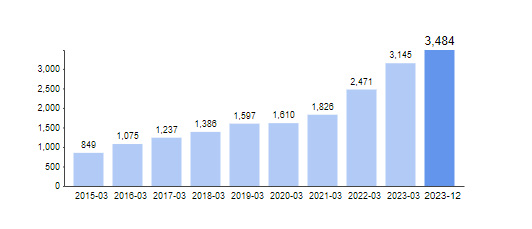Top 10 Tips To Backtesting Stock Trading From Penny To copyright
Backtesting can be essential to making improvements to the AI stock trading strategy, especially on unstable markets like penny and copyright stocks. Here are 10 important tips to help you make the most of backtesting.
1. Know the purpose behind backtesting
A tip: Backtesting is fantastic way to test the performance and effectiveness of a strategy using historical data. This will help you make better choices.
This is important because it allows you to test your strategy prior to investing real money on live markets.
2. Use historical data of excellent quality
Tip: Make sure the backtesting data contains accurate and complete historical prices, volumes, as well as other metrics.
For penny stocks: Add information on splits, delistings and corporate actions.
For copyright: Use data reflecting market events, such as halving or forks.
The reason: Good data results in realistic results
3. Simulate Realistic Market Conditions
Tips. If you test back, include slippages as well with transaction costs and bid-ask splits.
Ignoring certain elements can lead people to have unrealistic expectations.
4. Test your product in multiple market conditions
TIP: Re-test your strategy in diverse market scenarios, such as bull, bear, and sideways trends.
Why: Different conditions can influence the effectiveness of strategies.
5. Make sure you are focusing on the key metrics
TIP: Analyze metrics like
Win Rate : Percentage to make profitable trades.
Maximum Drawdown: Largest portfolio loss during backtesting.
Sharpe Ratio: Risk-adjusted return.
What are they? These factors help to determine the strategy’s reward and risk potential.
6. Avoid Overfitting
TIP: Ensure your plan doesn’t get too optimized to match the data from the past.
Testing using data from a non-sample (data that was not utilized in optimization)
Using simple, robust rules instead of complex models. Simple, robust rules instead of complex.
The reason is that overfitting can cause poor performance in real-world situations.
7. Include transaction latency
Tips: Use time delay simulation to simulate the time between trade signal generation and execution.
Consider the exchange latency as well as network congestion while you are formulating your copyright.
Why: In fast-moving market, latency is an issue for entry/exit.
8. Perform Walk-Forward Testing
Tip: Divide data into multiple time frames.
Training Period: Improve the method.
Testing Period: Evaluate performance.
This technique allows you to test the adaptability of your approach.
9. Backtesting is an excellent way to combine with forward testing
Utilize a backtested strategy for a simulation or demo.
This will help you verify that your strategy works as expected given the current conditions in the market.
10. Document and then Iterate
TIP: Take detailed notes of the parameters, assumptions and the results.
The reason is that documentation can help refine strategies over time and help identify patterns of what works.
Bonus The Backtesting Tools are efficient
For robust and automated backtesting, use platforms such as QuantConnect Backtrader Metatrader.
Why? Advanced tools simplify the process and reduce the chance of making mistakes manually.
These tips will ensure that you can optimize your AI trading strategies for penny stocks as well as the copyright market. See the top look what I found about ai stock predictions for website examples including best ai copyright, trading bots for stocks, ai stock prediction, ai copyright trading bot, ai investing app, stock ai, copyright ai, ai trading app, ai investing, ai stock prediction and more.

Top 10 Tips To Leveraging Ai Backtesting Tools To Test Stocks And Stock Predictions
Backtesting is a useful tool that can be used to enhance AI stock pickers, investment strategies and predictions. Backtesting simulates the way AI-driven strategies been performing under the conditions of previous market cycles and offers insight on their efficacy. Backtesting is a great tool for stock pickers using AI, investment predictions and other tools. Here are ten suggestions to assist you in getting the most value from backtesting.
1. Utilize high-quality, historical data
Tip – Make sure that the backtesting tool you use is up-to-date and contains all the historical data, including price of stocks (including volume of trading), dividends (including earnings reports) as well as macroeconomic indicators.
The reason is that quality data enables backtesting to show market conditions that are realistic. Incorrect or incomplete data could result in results from backtests being misleading, which will affect the reliability of your strategy.
2. Include Realistic Trading Costs and Slippage
Backtesting is a method to test the impact of real trade expenses like commissions, transaction charges as well as slippages and market effects.
Why: Failing to account for the cost of trading and slippage could overestimate the potential return of your AI model. By including these factors your backtesting results will be closer to real-world scenarios.
3. Tests across Different Market Situations
Tips: Test your AI stock picker using a variety of market conditions, such as bear markets, bull markets, and times with high volatility (e.g., financial crises or market corrections).
What is the reason? AI models may be different depending on the market conditions. Testing under various conditions can assure that your strategy will be flexible and able to handle different market cycles.
4. Utilize Walk-Forward Testing
Tips: Conduct walk-forward tests. These are where you compare the model to a sample of rolling historical data prior to confirming the model’s performance using data outside your sample.
What is the reason? Walk-forward tests can help test the predictive power of AI models based upon untested data. It is an more accurate gauge of performance in the real world than static backtesting.
5. Ensure Proper Overfitting Prevention
Tip: To avoid overfitting, you should test the model with different time periods. Make sure that it doesn’t create noises or anomalies based on previous data.
What happens is that when the model is too tightly tailored to historical data, it becomes less reliable in forecasting the future direction of the market. A properly balanced model will adapt to different market conditions.
6. Optimize Parameters During Backtesting
Utilize backtesting software to improve parameters such as stopping-loss thresholds and moving averages, or the size of your position by making adjustments incrementally.
Why: By optimizing these parameters, you will enhance the AI models ‘ performance. However, it’s important to ensure that the optimization doesn’t lead to overfitting as was mentioned previously.
7. Drawdown Analysis & Risk Management Incorporated
Tip: Include risk control techniques including stop losses, risk to reward ratios, and position sizing during backtesting to determine the strategy’s resistance against drawdowns that are large.
Why? Effective risk management is essential to ensuring long-term financial success. Through analyzing the way that your AI model handles risk, you will be able to identify potential vulnerabilities and adjust the strategy for better returns that are risk-adjusted.
8. Analyze Key Metrics Besides Returns
You should focus on other indicators than returns that are simple, such as Sharpe ratios, maximum drawdowns, winning/loss rates, as well as volatility.
Why are these metrics important? Because they provide a better understanding of the risk adjusted returns from your AI. When you only rely on returns, it’s possible to miss periods of volatility, or even high risks.
9. Simulation of different asset classes and strategies
Tip Rerun the AI model backtest on various kinds of investments and asset classes.
The reason: Having the backtest tested across different asset classes helps test the adaptability of the AI model, ensuring it is able to work across a variety of investment styles and markets which include high-risk assets such as copyright.
10. Regularly Update and Refine Your Backtesting Methodology
Tip. Update your backtesting with the most current market information. This ensures it is up to date and is a reflection of changes in market conditions.
Why is that the market is always changing, and your backtesting should be too. Regular updates will ensure that you keep your AI model current and assure that you are getting the most effective outcomes through your backtest.
Bonus Make use of Monte Carlo Simulations for Risk Assessment
Utilize Monte Carlo to simulate a range of outcomes. This can be done by running multiple simulations based on various input scenarios.
Why? Monte Carlo Simulations can help you assess the probabilities of different results. This is particularly useful when dealing with volatile markets, such as copyright.
You can use backtesting to enhance the performance of your AI stock-picker. Through backtesting your AI investment strategies, you can be sure they’re reliable, solid and able to change. Read the recommended artificial intelligence stocks info for site tips including ai stock analysis, copyright ai bot, ai for stock trading, ai stock prediction, ai for stock market, smart stocks ai, incite, ai stock market, trade ai, ai stock and more.

Leave a Reply